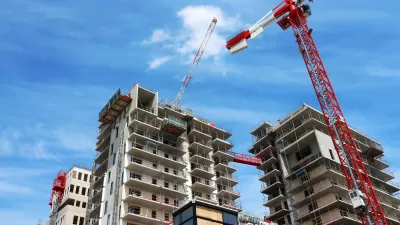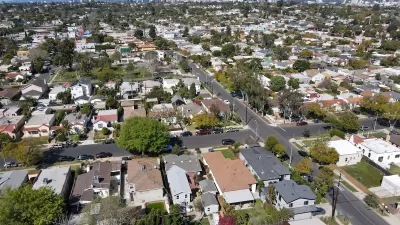It's not just New York and San Francisco—many professions don't offer enough wages to afford an apartment at today's prices.

Looking at national housing data collected in the 2016 State of the Nation's Housing report, Elizabeth La Jeunesse finds that "for every 100 very low-income renters (those earning up to 50 percent of area median income) only 57 rental units were affordable and available."
That's just one way of looking at the big gap between the available housing supply and the means Americans have to afford it, "due in part to a lack of low-rent units, and is compounded by the fact that many existing low-rent units are occupied by higher-income households," writes La Jeunesse. To further illustrate this point, La Jeunesse breaks down the rental market in the cities of San Francisco, New York City, Washington, D.C., Boston, Los Angeles, San Diego, Philadelphia, Miami, Dallas, each with its own one-bedroom fair market rent (FMR) as well as its own level of income needed to afford a one-bedroom apartment at FMR.
The comparison reveals that it's not just very low income renters that are encountering the housing gap, it's also emergency medical technicians, cashiers, truck drivers, and many more.
For example, according to 2015 HUD estimates, the fair-market rent (including utilities) for a modest one-bedroom apartment was as much as $1,635 in San Francisco, and over $1,200 in New York and Washington, DC. Data from the Bureau of Labor Statistics indicate that in these markets, most full-time cashiers, retail and sales persons, and food preparation workers would have been unable to afford even a modest one-bedroom apartment, under the standard assumption that they should spend no more than 30 percent of their income on housing.
This kind of framing for the housing crisis, concentrating on the types of workers that can't afford to live in specific cities, gained the spotlight again in the weeks since La Jeunesse published this analysis. Attorney Kate Downing famously announced her resignation as a member of the Palo Alto Planning and Transportation Commission, inspiring lots of responses and commentary. One of the talking points from the resignation letter: the inability of teachers, first responders, and service workers (as well as attorneys and software engineers) to afford that city.
FULL STORY: Many Full-Time Workers Face Housing Affordability Problems

Alabama: Trump Terminates Settlements for Black Communities Harmed By Raw Sewage
Trump deemed the landmark civil rights agreement “illegal DEI and environmental justice policy.”

Planetizen Federal Action Tracker
A weekly monitor of how Trump’s orders and actions are impacting planners and planning in America.

The 120 Year Old Tiny Home Villages That Sheltered San Francisco’s Earthquake Refugees
More than a century ago, San Francisco mobilized to house thousands of residents displaced by the 1906 earthquake. Could their strategy offer a model for the present?

Ken Jennings Launches Transit Web Series
The Jeopardy champ wants you to ride public transit.

BLM To Rescind Public Lands Rule
The change will downgrade conservation, once again putting federal land at risk for mining and other extractive uses.

Indy Neighborhood Group Builds Temporary Multi-Use Path
Community members, aided in part by funding from the city, repurposed a vehicle lane to create a protected bike and pedestrian path for the summer season.
Urban Design for Planners 1: Software Tools
This six-course series explores essential urban design concepts using open source software and equips planners with the tools they need to participate fully in the urban design process.
Planning for Universal Design
Learn the tools for implementing Universal Design in planning regulations.
Clanton & Associates, Inc.
Jessamine County Fiscal Court
Institute for Housing and Urban Development Studies (IHS)
City of Grandview
Harvard GSD Executive Education
Toledo-Lucas County Plan Commissions
Salt Lake City
NYU Wagner Graduate School of Public Service





























